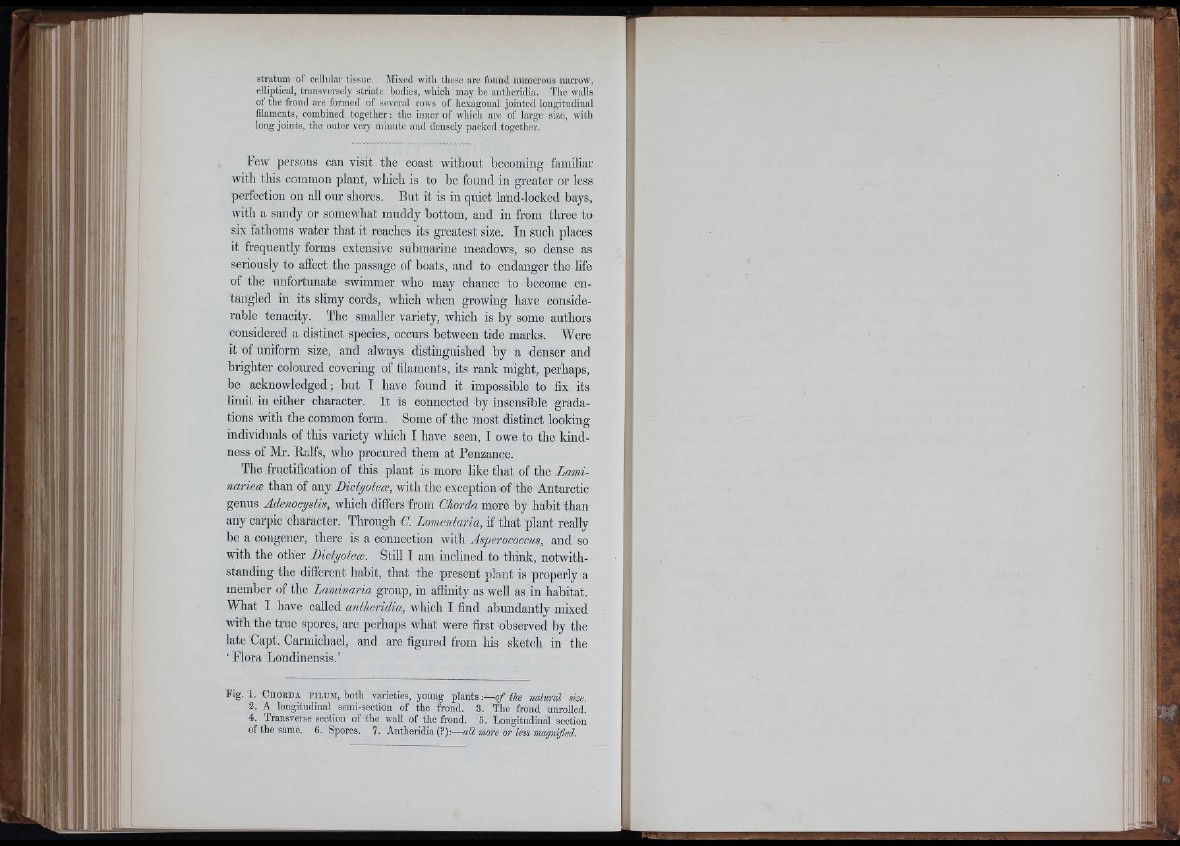
M
stratum ol' cellular tissue. Mixed with these are found numerous narrow,
elliptical, transversely striate bodies, whicli may be antheridia. The walls
of the frond are formed of several rows of hexagonal jointed longitudinal
filaments, combined together: the inner of which are of large size, with
long joints, the outer very minute aud densely packed together.
Tew persons can visit the coast without becoming familiar
with this common plant, which is to be found in greater or less
perfection on all our shores. But it is in quiet land-locked hays,
with a sandy or somewhat muddy bottom, and in from three to
six fathonis water that it reaches its greatest size. In such places
it frequently forms extensive submarine meadows, so dense as
seriously to affect the passage of boats, and to endanger the life
of the unfortunate swimmer who may chance to become entangled
in its slimy cords, which when growing have considerable
tenacity. The smaller variety, which is by some authors
considered a distinct species, occurs between tide marks. Were
it of uniform size, and always distinguished by a denser and
brighter coloured covering of filaments, its rank might, perhaps,
be acknowledged ; but I have found it impossible to fix its
limit in either character. It is connected hy insensible gradations
with the common form. Some of the most distinct looking
individuals of this variety which I have seen, I owe to the kindness
of Mr. Balfs, who procm-ed them at Penzance.
The fructification of this plant is more like that of the Lami-
nariece than of any Dictyoteoe, with the exception of the Antarctic
genus Adenocystis, which differs from Chorda more by habit than
any cai-pic character. Through C. Lomentaria, if that plant really
be a congener, there is a connection with Asperocoocus, aud so
with the other Bictyoteoe. Still I am inclined to think, notwithstanding
tlie different habit, tliat the present plant is properly a
member of the Laminaria group, in affinity as well as in habitat.
What I have called antheridia, which I find abundantly mixed
with the true spores, are perhaps what were first observed by the
late Capt. Carmichael, and are figured from his sketch in the
‘ Plora Londinensis.’
Fi< . 1. C h o r d a f il u m , botb varieties, young plants :— o f the natural size.
2. A longitudinal semi-section of tbe frond. 3. The fi-ond unrolled.
4. Transverse section of the wall of the fi-ond. 5 . Longitudinal section
of the same. 6. Spores. 7. Antheridia (?)■.— all more or less magnified.
to"
to 'ii
: i!|
:■ ?!
À
. if!
i